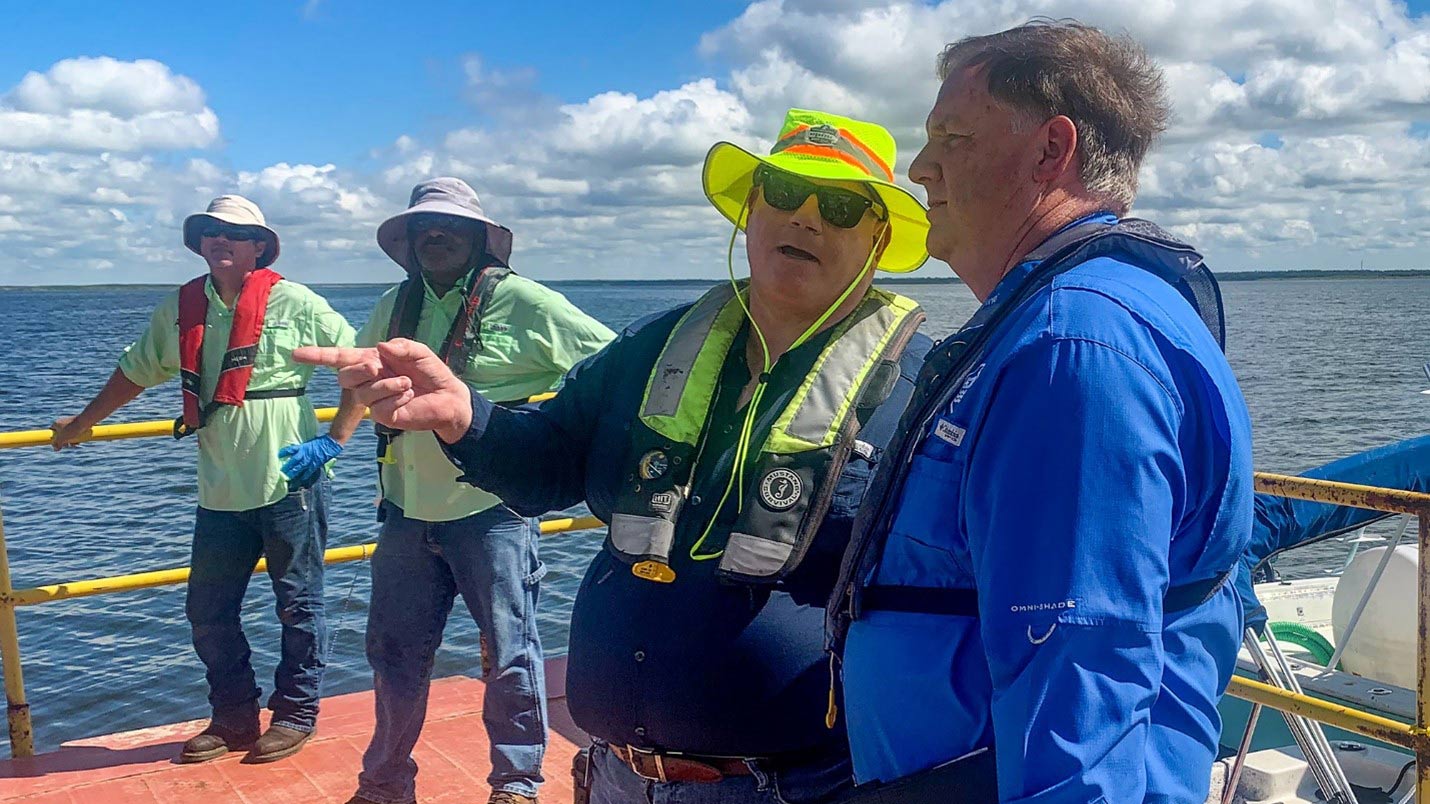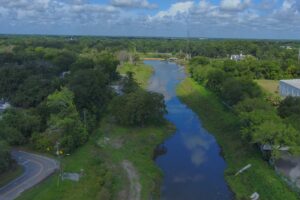Guest message: Vincent Seibold, P.E., MBA,
Chief, Bureau of District Projects and Construction
Pilot project may help determine new ways to improve water quality at Lake Jesup and beyond
Sept. 30, 2021
Vince Seibold, Chief of the Bureau of District Projects and Construction (center), provides an update on the Lake Jesup water quality improvement pilot project to District Executive Director Mike Register (right).
I’m excited to share with you today about the progress our staff and contractors are making on a pilot project at Lake Jesup — one of several innovative water quality improvement projects we are undertaking. I recently visited the project site to see the operation first-hand and talk with the staff and contractors. I invite you to read about their great work.
St. Johns River Water Management District staff are thinking outside the box with the launch this summer of an innovative pilot project to harvest and remove algae, suspended solids and associated nutrients from the waters of central Florida’s Lake Jesup. So far, the pilot project has effectively demonstrated the ability to separate algae from the lake water, and holds promise for use on a larger scale, not only at Lake Jesup, but other areas around Florida and the country.
Staff will use data gathered during the pilot project to help us determine the potential for a full-scale system to help Lake Jesup achieve its state water quality standards. District Senior Professional Engineer Gretchen Kelley in our Bureau of District Projects and Construction is leading the project team for the pilot project known as the Lake Jesup intact cellular algae harvesting project. This kind of project is needed throughout Florida as one way to help fight the effects of algae that are spurred by excess nutrients in waterways. The District-led pilot project is being accomplished through a $1.65 million 2020 Harmful Algal Bloom Innovate Technology Project Grant through the Florida Department of Environmental Protection.
Reductions in excess nutrients prevent or reduce the intensity and duration of harmful algal blooms and improve water quality by allowing sunlight to reach aquatic grasses, which serve as food and habitat for many fish and animals. We recently shared the outcome of the treatment process during a tour with Sen. Jason Brodeur, Rep. Keith Truenow and Rep. David Smith.
During the pilot project, algae-tinted water enters filtering equipment that is mounted on a barge which is transported around the lake. An innovative dissolved air flotation technology is used to attach microscopic air bubbles to algae and suspended sediment, thereby separating the algal biomass from the now-clarified water. The clarified water is returned to the lake, with the algae transported to land and is eventually managed/treated by our partners at Seminole County’s Yankee Lake Wastewater Treatment Plant.
Watch our progress on Lake Jesup and other projects on our website.






